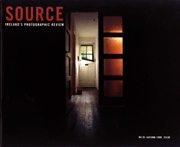More Glossy Than Reflective
Review by Fiona Kearney
Issue 20 Autumn 1999
View Contents ▸
Arles is the small town in Provence where Van Gogh painted sunflowers and infamously mangled his ear. For the last thirty years, it has also been host to the longest running photography festival in the world, Les Rencontres Internationales de la Photographie. The theme of this year's event was 'Vive les Modernités', a motif to celebrate the welter of modernisms this century has produced and an occasion for the festival's organisers to gather together under one conceptual umbrella such photo-luminaries as Walker Evans, Alexander Rodchenko, Hilla and Bernd Becher, and Lee Friedlander. Our millennium moment has intensified historical appraisals of this sort and all too often, we encounter no more than cursory surveys, shimmering summaries of the past which do little to further our understanding of the complex image culture of our time. Unfortunately, Arles was more glossy than reflective, a slight celebration of modernity despite the marathon number of presentations and events in its programme. Many of the exhibitions were whimsical curations, flimsy ideas propped up by an assortment of images that provided nothing much other than a pleasant parcours of pictures. The exception to this was Photographic Abstraction, an insightful look at the development of abstract form in photography since the turn of the century which contextualised the innovations of artists such as Man Ray and Moholy-Nagy within a wider framework of experimentation. Even the enjoyable tributes to modernist heros such as Evans and Rodchenko lacked the scale necessary to establish the significance of their contribution to the history of the medium. Shelby Lee Adams, Brice, 1974
Shelby Lee Adams, Brice, 1974
That said, the Rencontres did feature some excellent exhibits, in particular the Appalachian Portraits of American photographer, Shelby Lee Adams. This work marks nearly thirty years spent by the artist working with an isolated mountain community documenting a way of life usually only depicted in the media through hillbilly caricatures. The result is a series of profound observations of this reclusive population dependent for the most part on the acceptance accorded to Adams by his subjects because of his kin relations there. The photographs, however, are more than an important documentary of a declining rural existence and distinguish themselves primarily for the formal beauty of their composition. Adams trained in Fine Art and draws on a rich personal culture of images, referencing Goya to Diane Arbus, to create works of extraordinary depth. In this, he achieves an empathy for the Appalachian people without losing any of the peculiarity of their situation or the disturbing quality of their world. The success of Adam's project is his refusal to stereotype his subjects in the way that Richard Avedon glamorized the American mid-West. Interestingly then, the photographs selected for press release by the festival organiser, Gilles Mora, are the most confrontational of the work on show and do not reflect the complex organisation of space in the majority of the Appalachian Portraits. Alexander Rodchenko, Regina Lemberg, 1935
Alexander Rodchenko, Regina Lemberg, 1935
This is perhaps indicative of the basic tension in the festival itself between the allure of the spectacle favoured by the organisers and the quiet space required to really consider a photograph. This year for the first time, a number of evening events were staged in the breathtaking setting of Arles' ancient Roman amphitheatre. Here, the large audience experienced a new kind of moving image; photos continuously projected on a giant screen to a specially devised soundtrack. These nineties photo-happenings introduced a photographic viewing mode for the attention span of our tv generation and could have been seen as a refreshing introduction to the work of Friedlander et al, had the short-lived gleam of the projected image been supported by a substantial show where the work could be regarded at a personal pace. This was not the case this year. As a festival Arles has many strengths, not least the use of numerous abbeys and churches to provide a naturally contemplative space for the essentially still art of photography. A dynamic fringe festival, a showcase of student artists working with digital imaging techniques and the laudable opportunity for young photographers to show their portfolios to attending artists and curators indicate the potential of the event. So vive the future of Les Rencontres if not this year's superficial modernités.
Other articles by Fiona Kearney:
Other articles mentioning Alexander Rodchenko:






